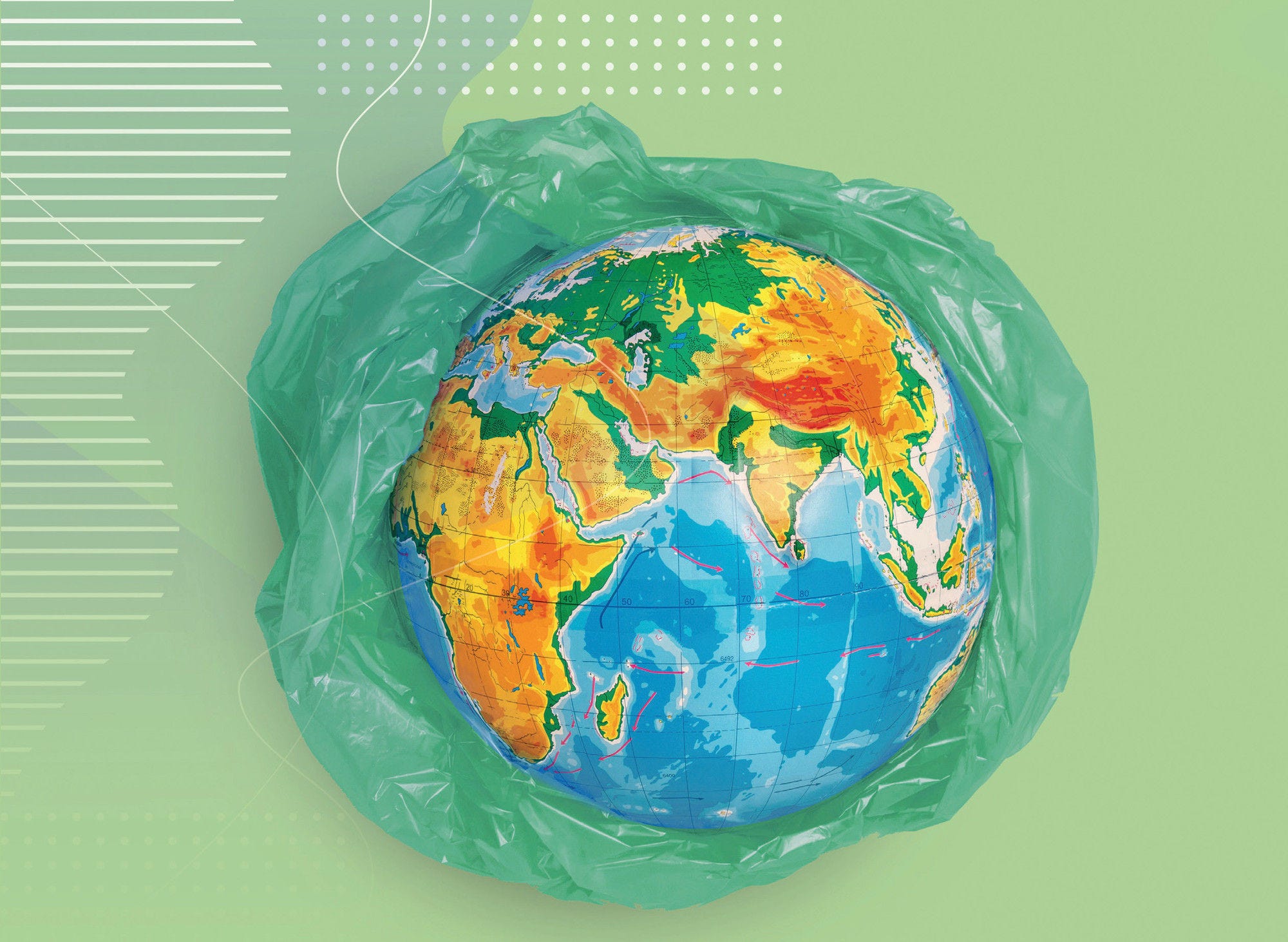Achieving a global goal of eliminating plastic pollution, as articulated by the United Nations Environment Assembly in its resumed fifth session, requires shared objectives and co-ordinated efforts at the international level. All countries will need to implement policies to curb plastics demand, increase product lifespans through repair and reuse, and improve waste management and recyclability. The Global Plastics Outlook models two policy packages, with different levels of stringency, to understand their environmental and economic impacts by 2060:
1. The Regional Action policy scenario models the impact of a policy package to improve the circularity of plastics use and diminish the environmental impacts of plastics. The package ensures that economic growth can continue, while reducing plastic leakage to the environment. It comprises a mix of fiscal and regulatory policies targeting all phases of the plastics lifecycle, but is more ambitious for OECD countries than for non-OECD countries.
2. The Global Ambition policy scenario explores a very stringent policy package that aims to reduce plastic leakage to near zero by 2060. The package includes the same instruments as the Regional Action policy scenario, but with more ambitious targets. Furthermore, it is implemented more rapidly and globally.
By 2060, the Regional Action policy package could decrease plastic waste by almost a fifth below the Baseline and more than halve plastic leakage to the environment, compared to the Baseline (where leakage grows over time). This is largely due to a tax on plastics use, which gradually increases to USD 750/tonne by 2060, and a tax on packaging that is one-third higher. These taxes restrain both the demand for and production of plastics. The global recycling rate would increase to 40%. Policies that boost demand for plastic scrap and increase the supply of recycled plastics see the market share of secondary plastics surge, from 12% to 29%. Meanwhile, mismanaged waste would decline by more than 60% from Baseline levels, falling below 2019 levels, largely through improved waste management systems in non-OECD countries. Despite its positive impacts, plastics use and waste would still more than double by 2060 from 2019 levels in the Regional Action scenario. Although plastics use and waste will be partially decoupled from economic growth, stocks of plastics in the environment continue to build up rapidly.
The Global Ambition package could reduce plastics use and waste by a third below the Baseline and almost completely eliminate plastic leakage to the environment by 2060. The reductions in use and waste would largely be achieved through a tax on plastics that increases to USD 750/tonne globally by 2030 and to USD 1500/tonne by 2060, and a tax on packaging that is one-third higher. Recycling would increase to almost 60%, becoming the most common waste management option. Meanwhile the market share of secondary plastics would surge to 41% by 2060, primarily due to important pull policies such as increased recycled content targets. Mismanaged waste would fall to near zero (6 Mt, down from 153 Mt in the Baseline scenario). Leakage to the environment is also substantially curbed, falling by 85% compared to the Baseline. Macroplastic leakage is almost completely eliminated, including to aquatic environments, though microplastic leakage is only reduced by 9% compared to Baseline projections. The Global Ambition package is projected to reduce emissions by 2.1 Gt CO2e, underlining the positive impact of circular policies on achieving climate goals.
